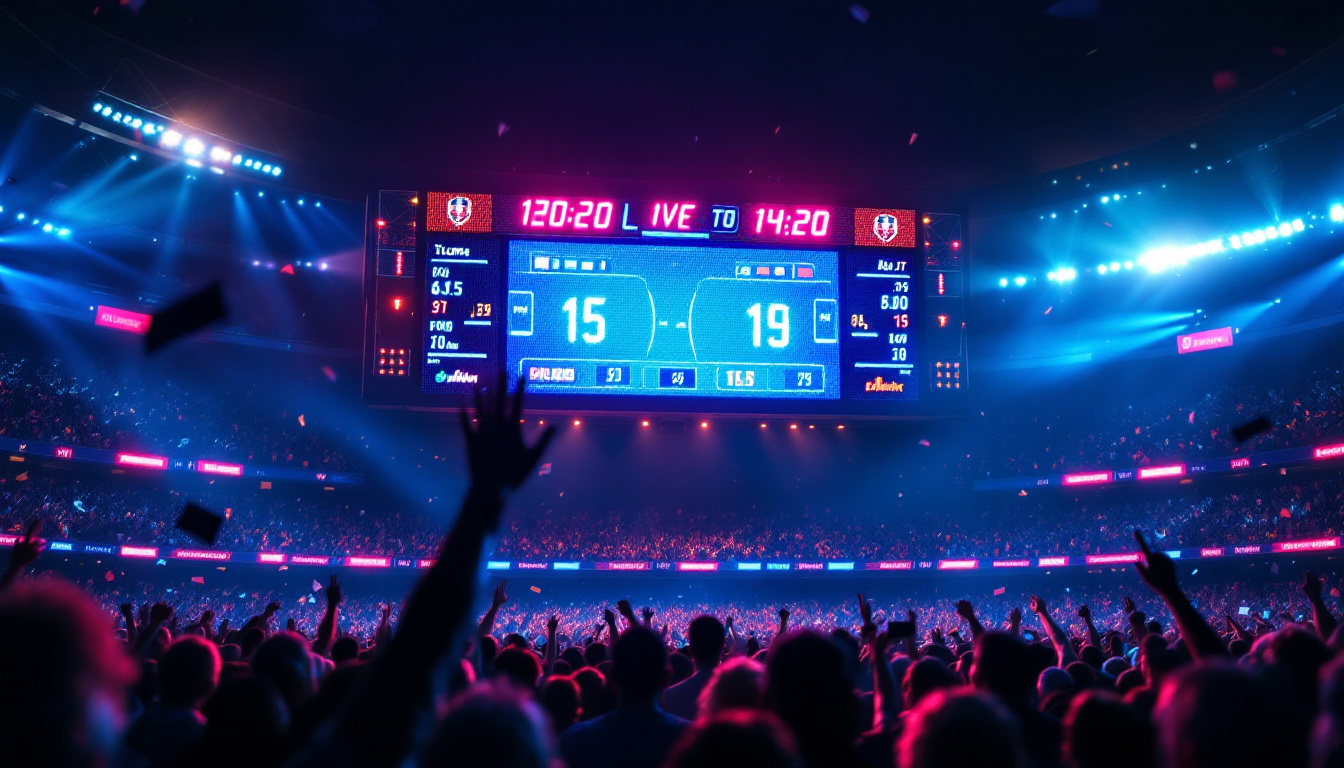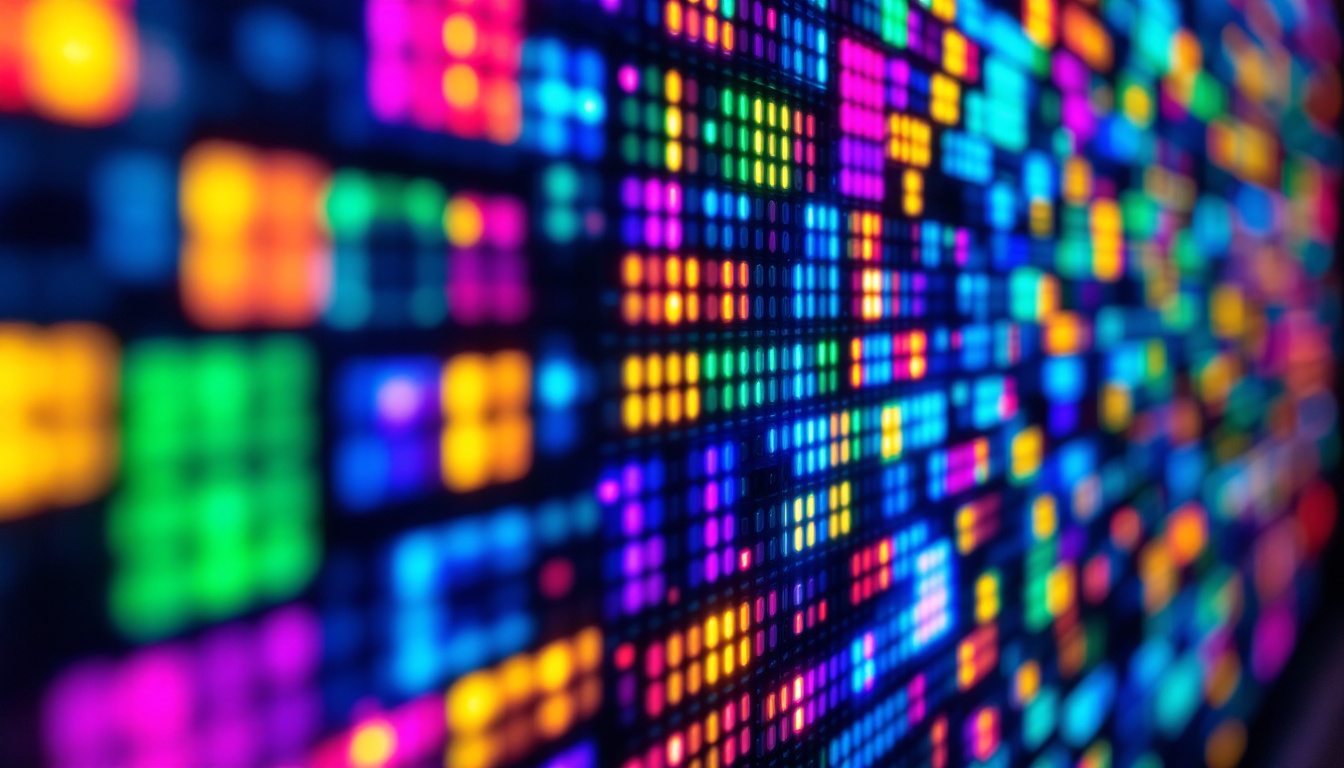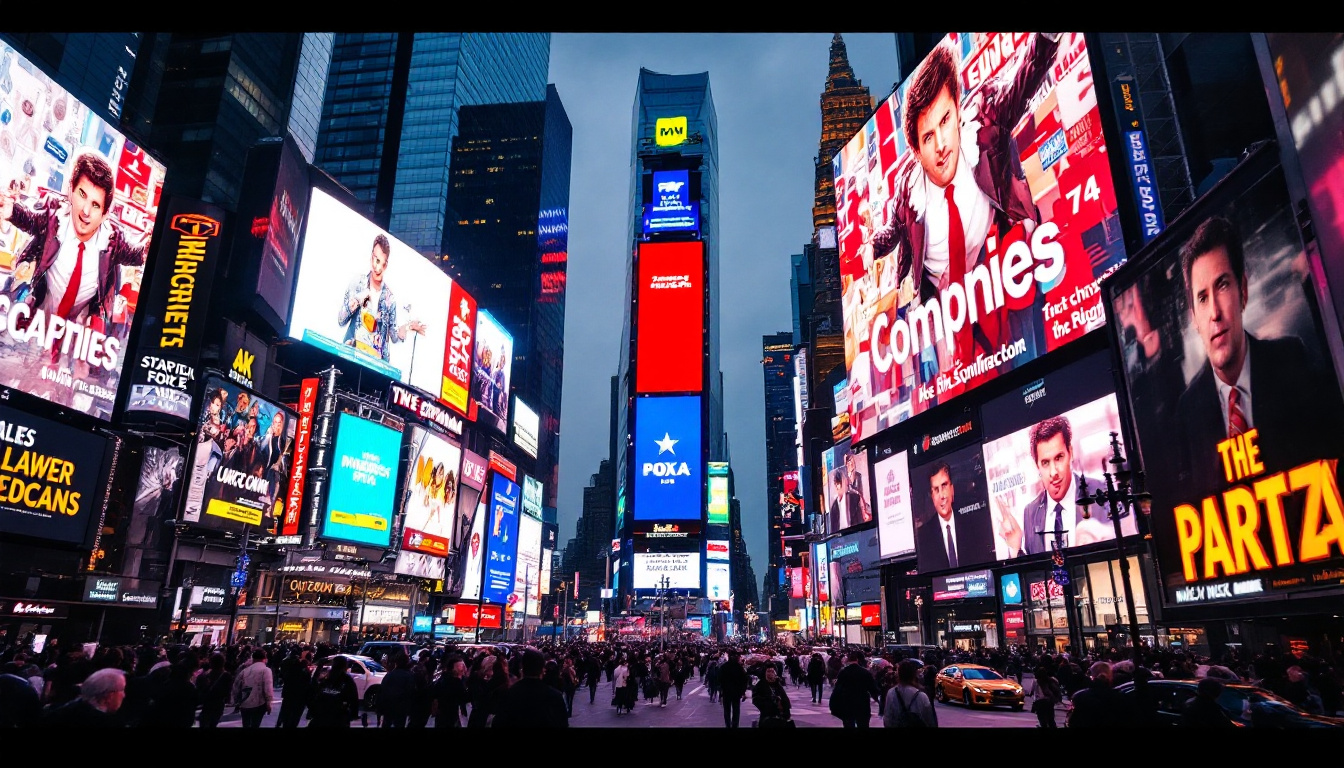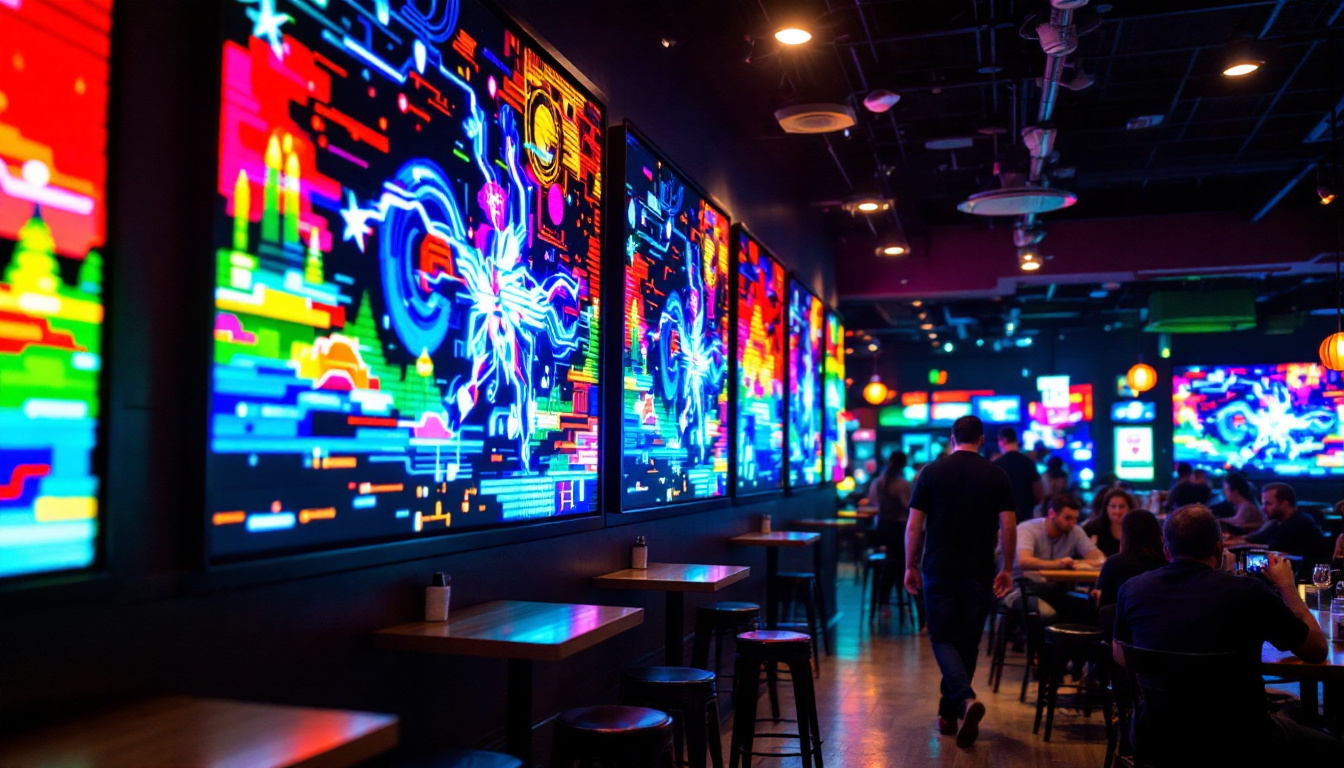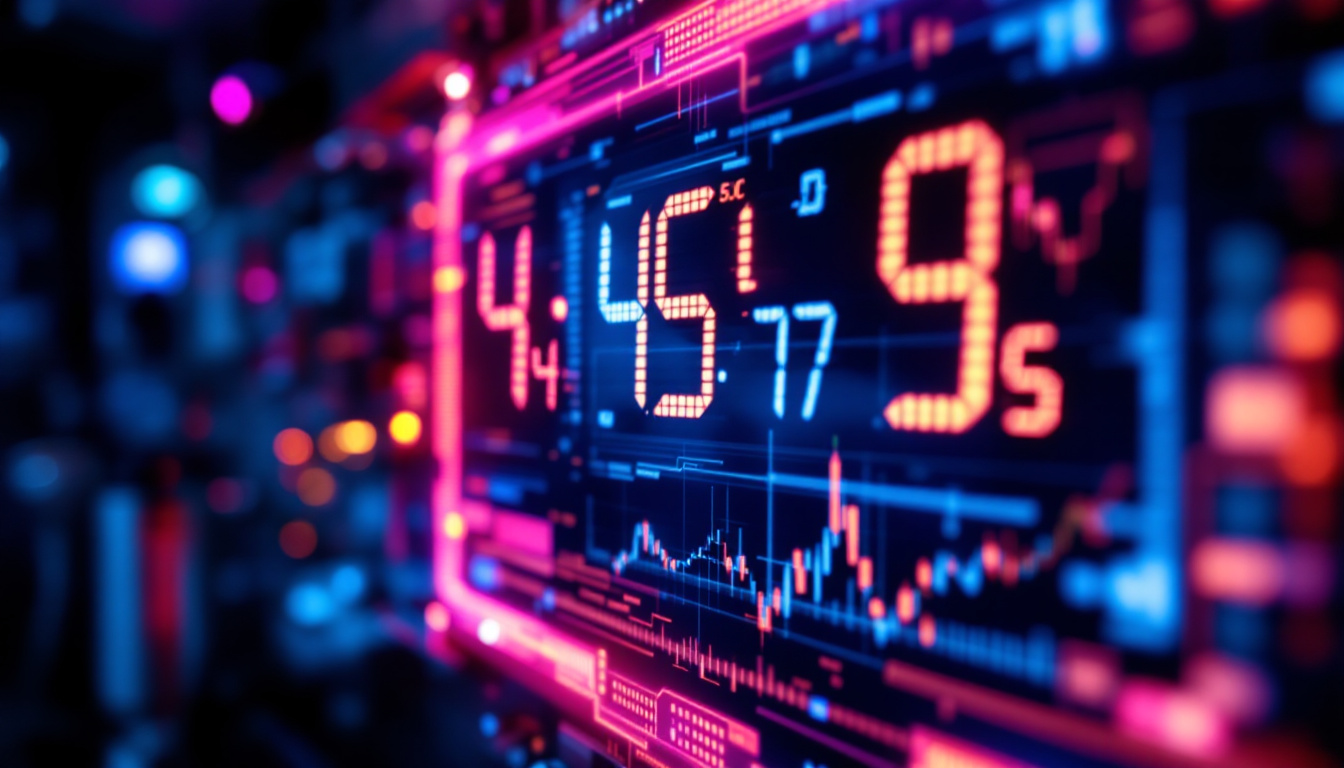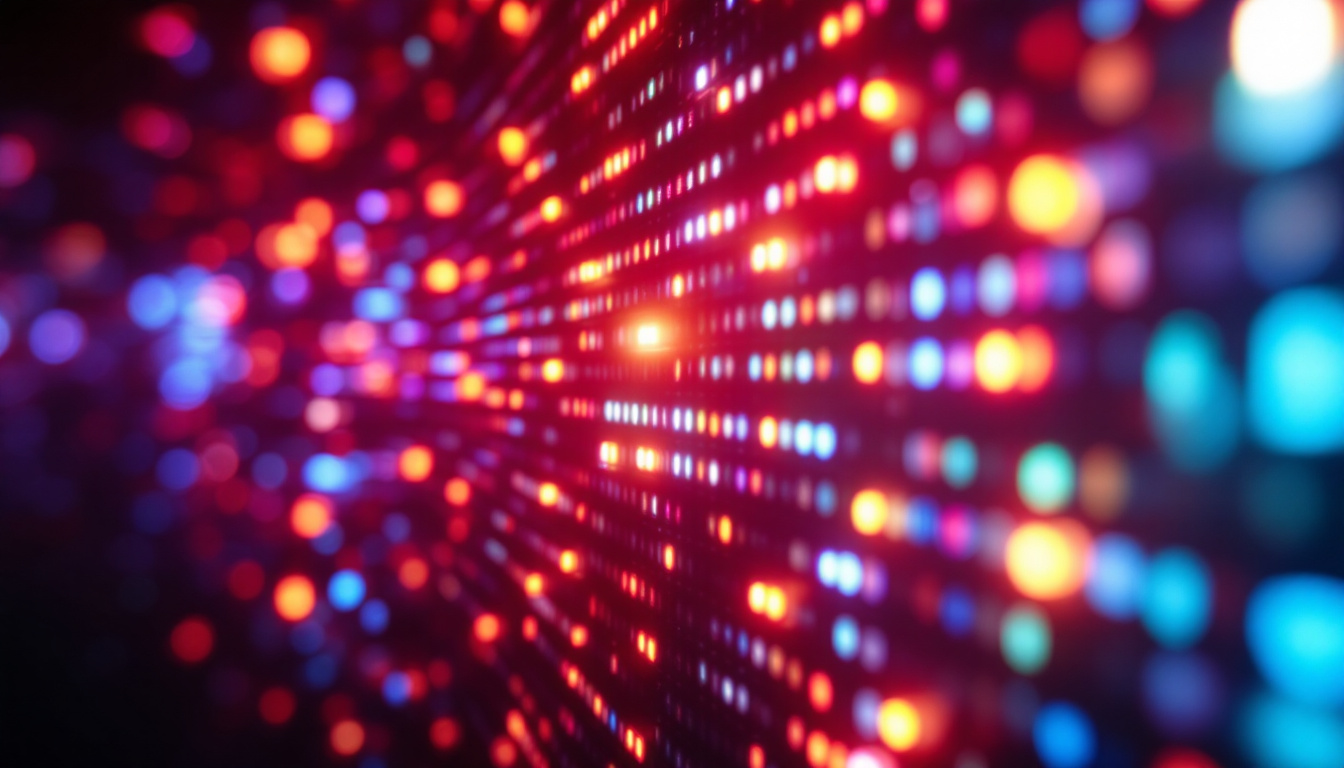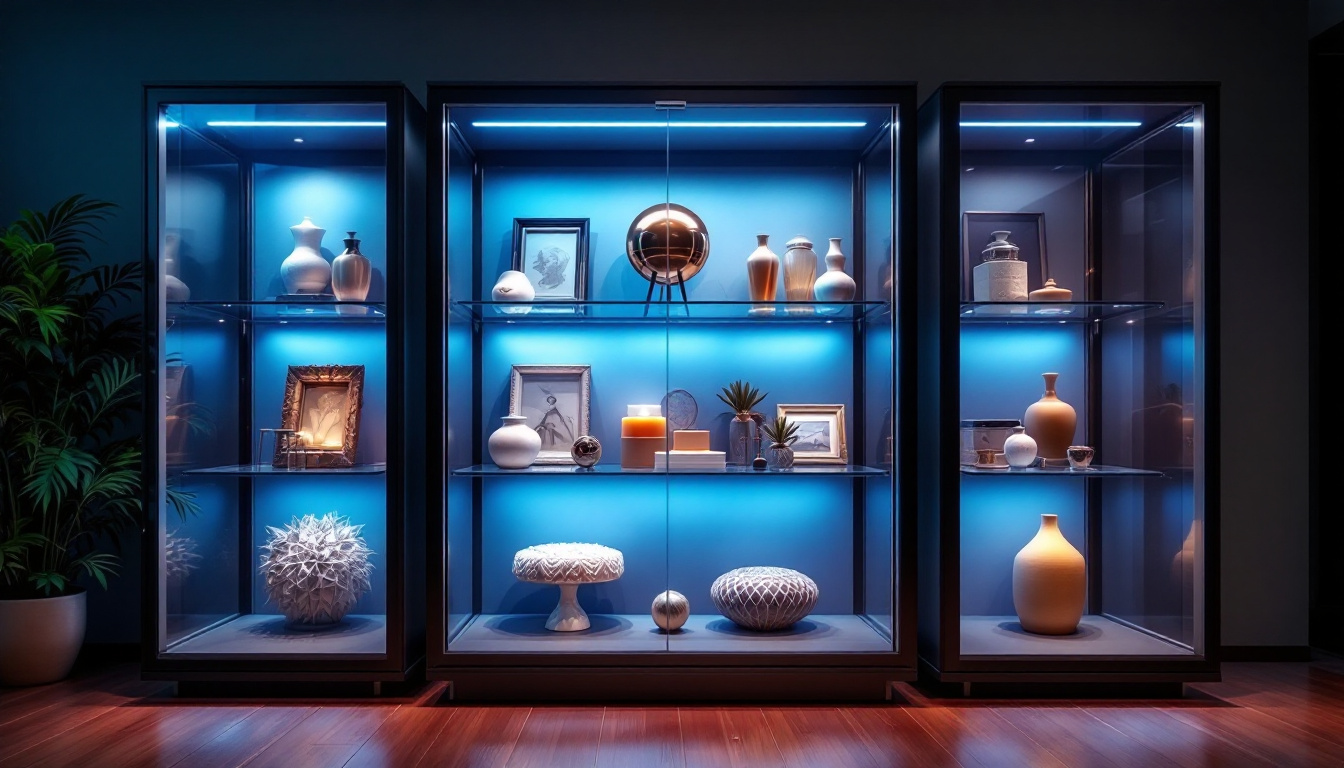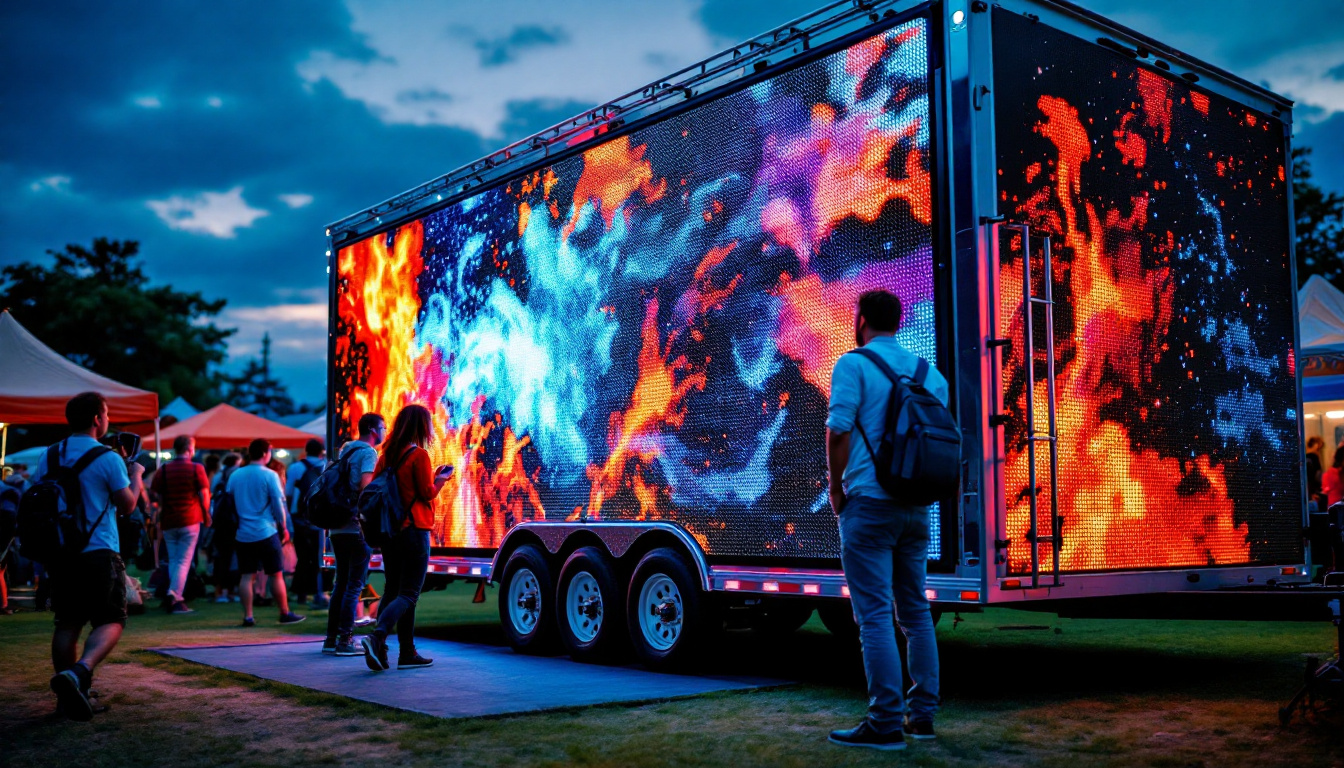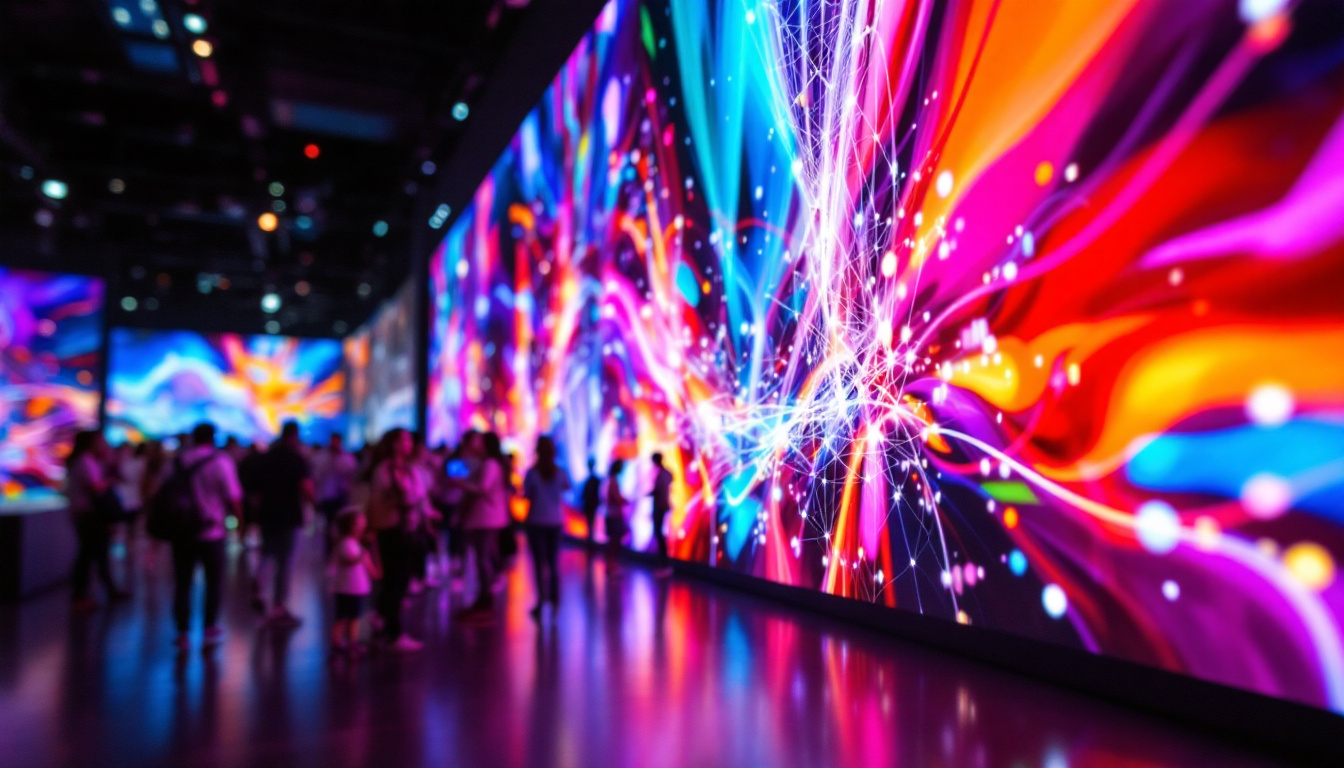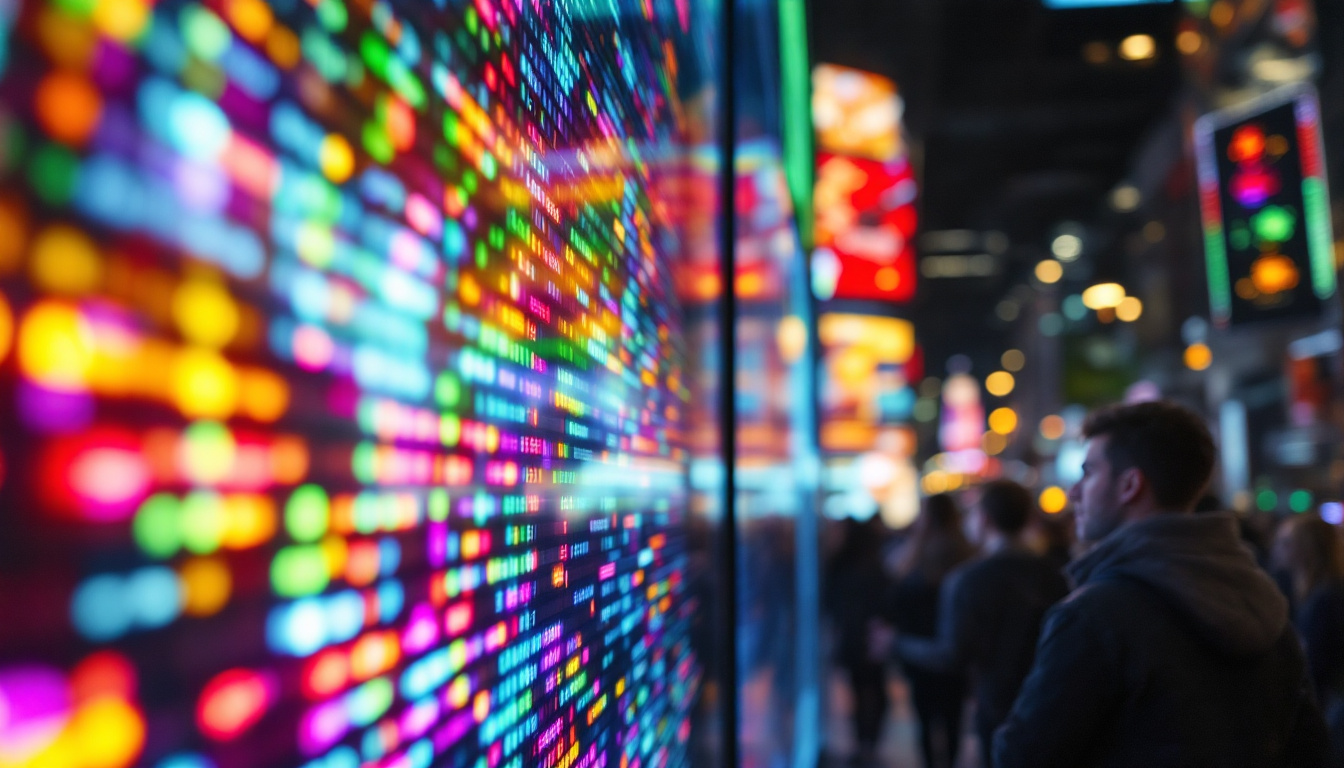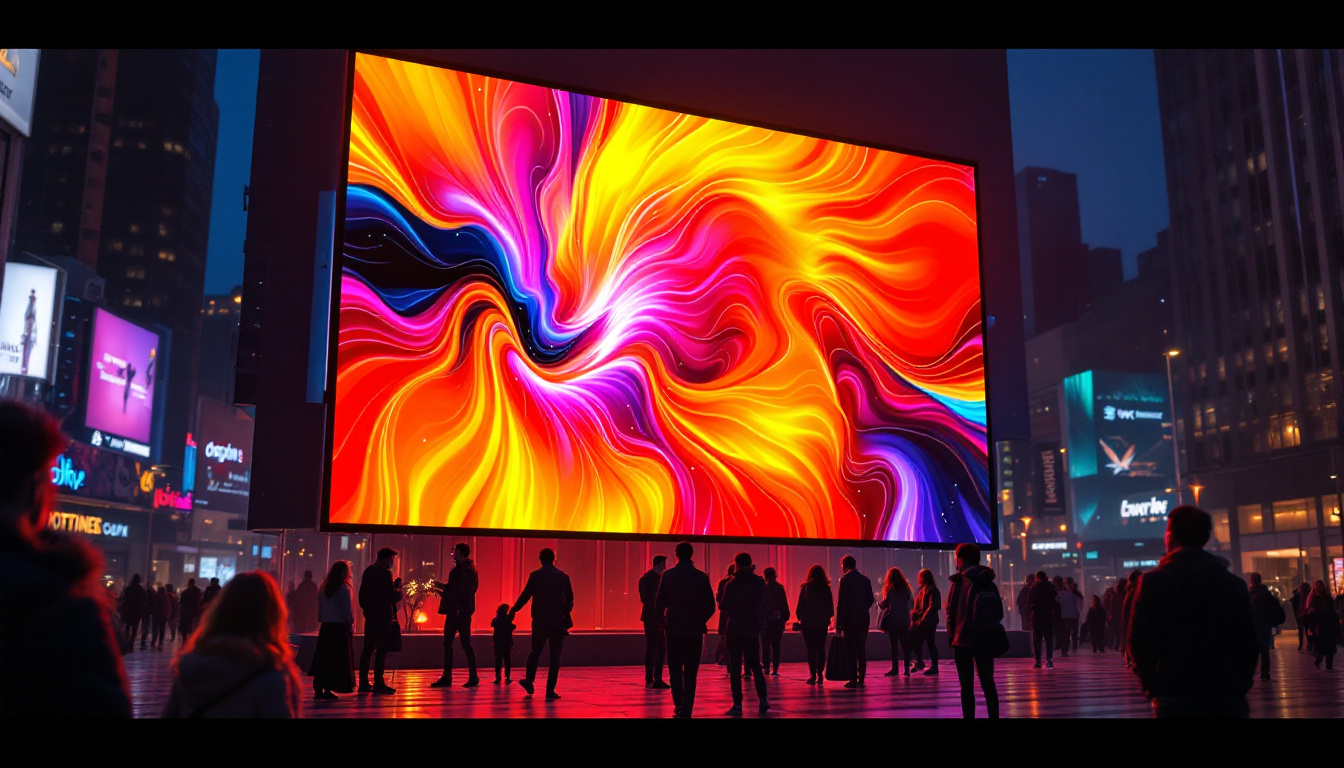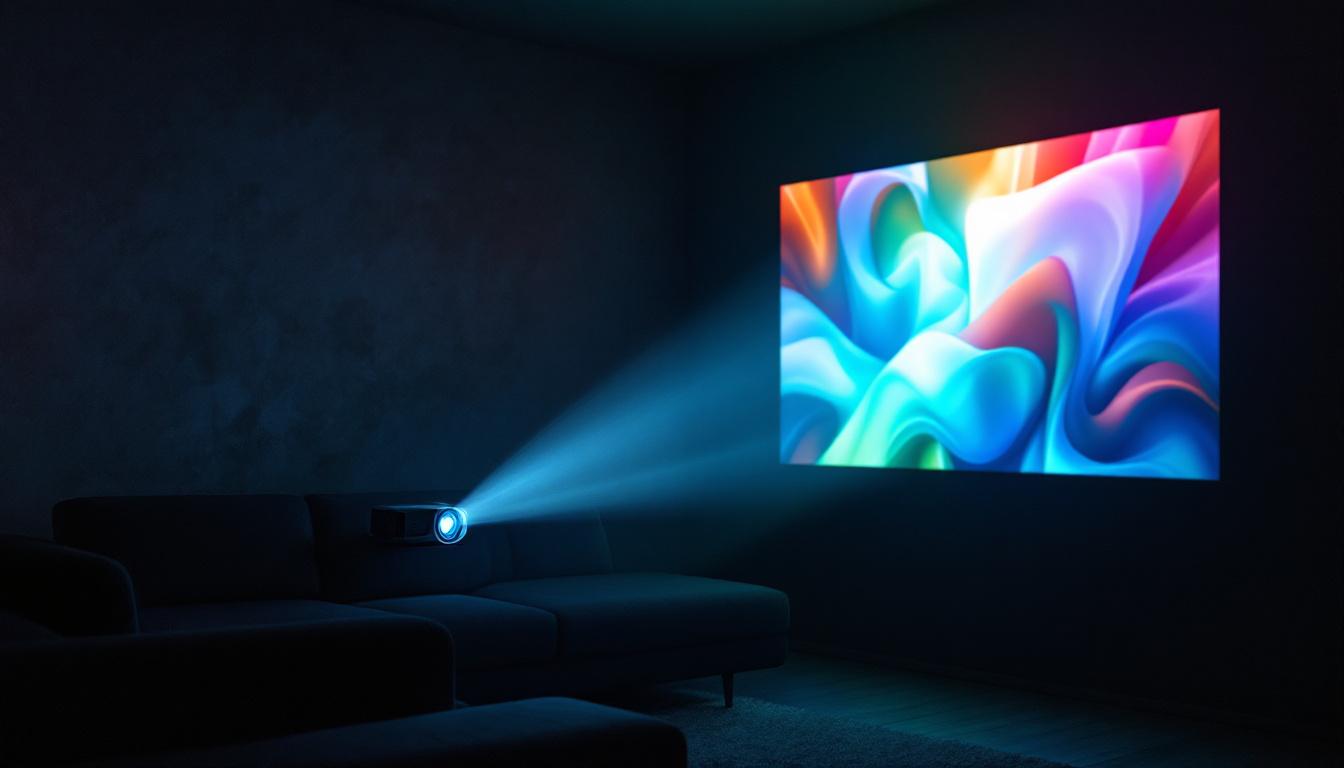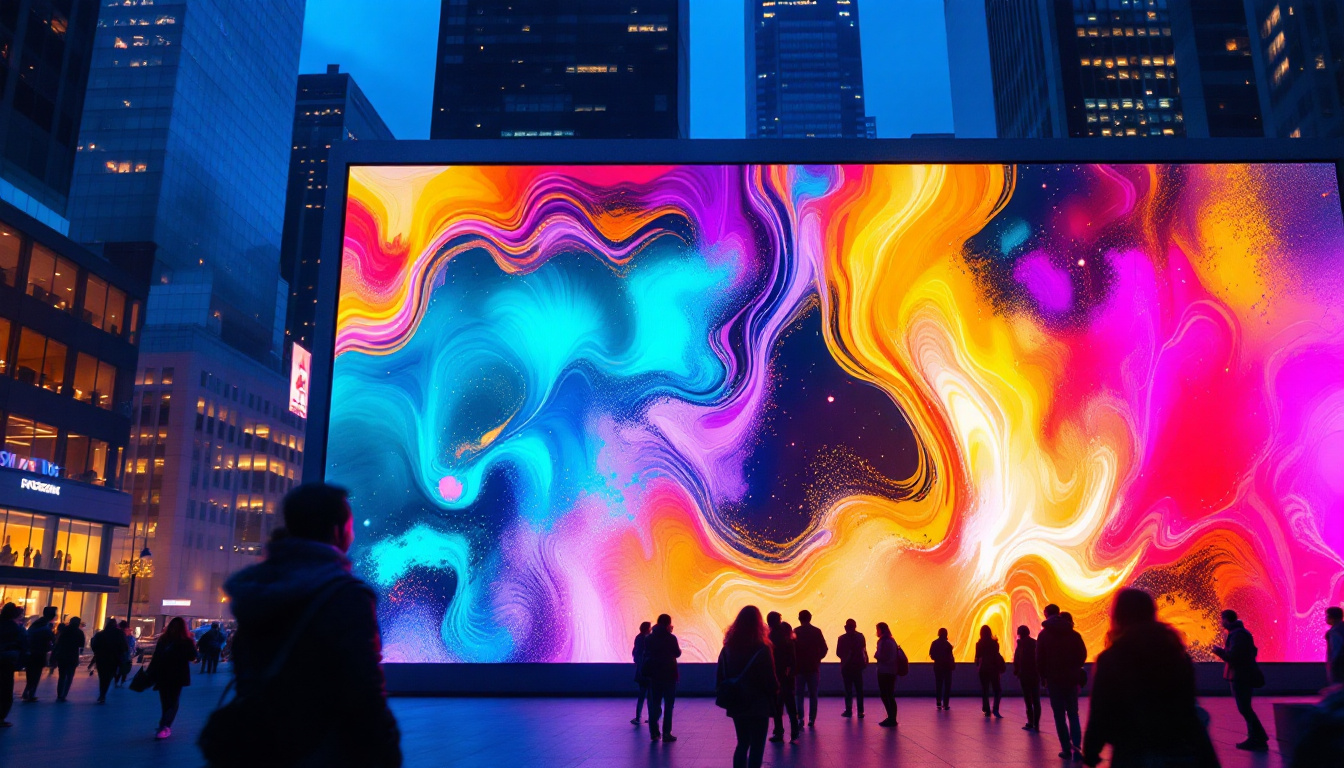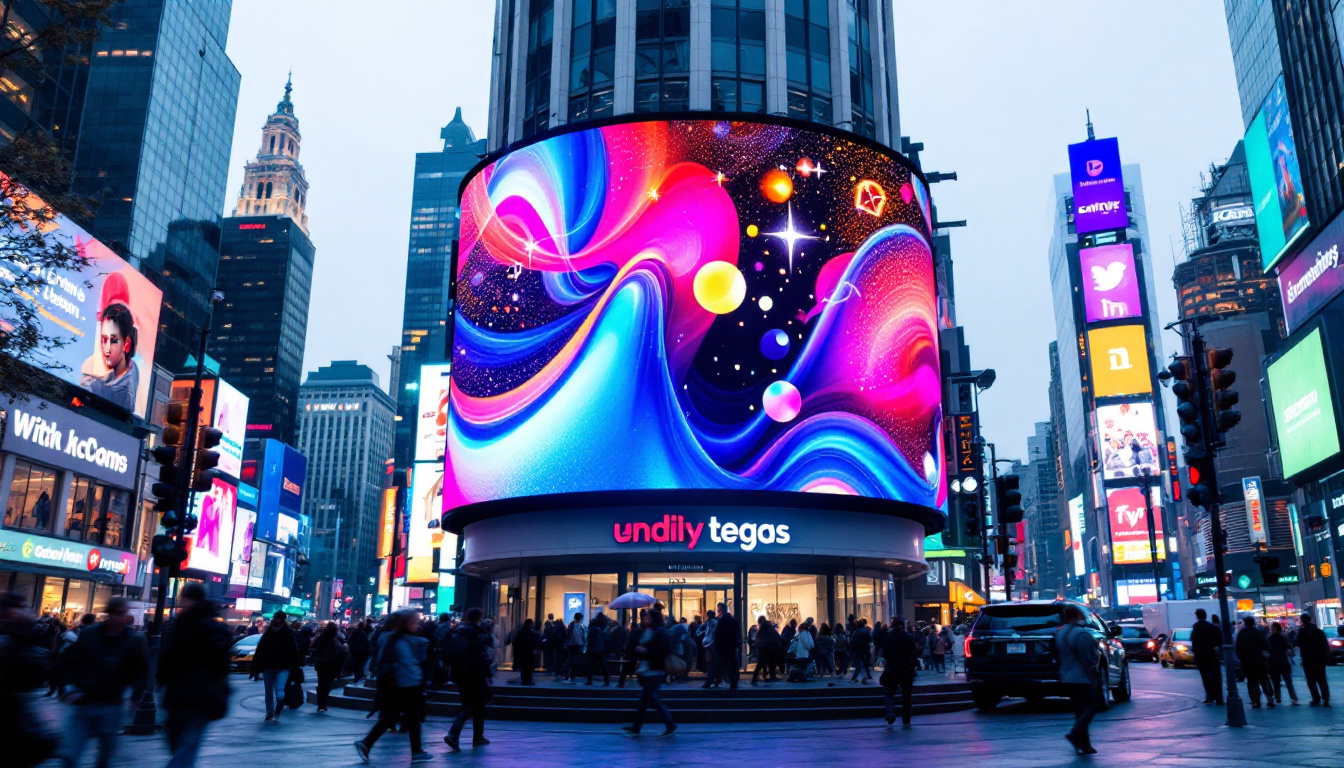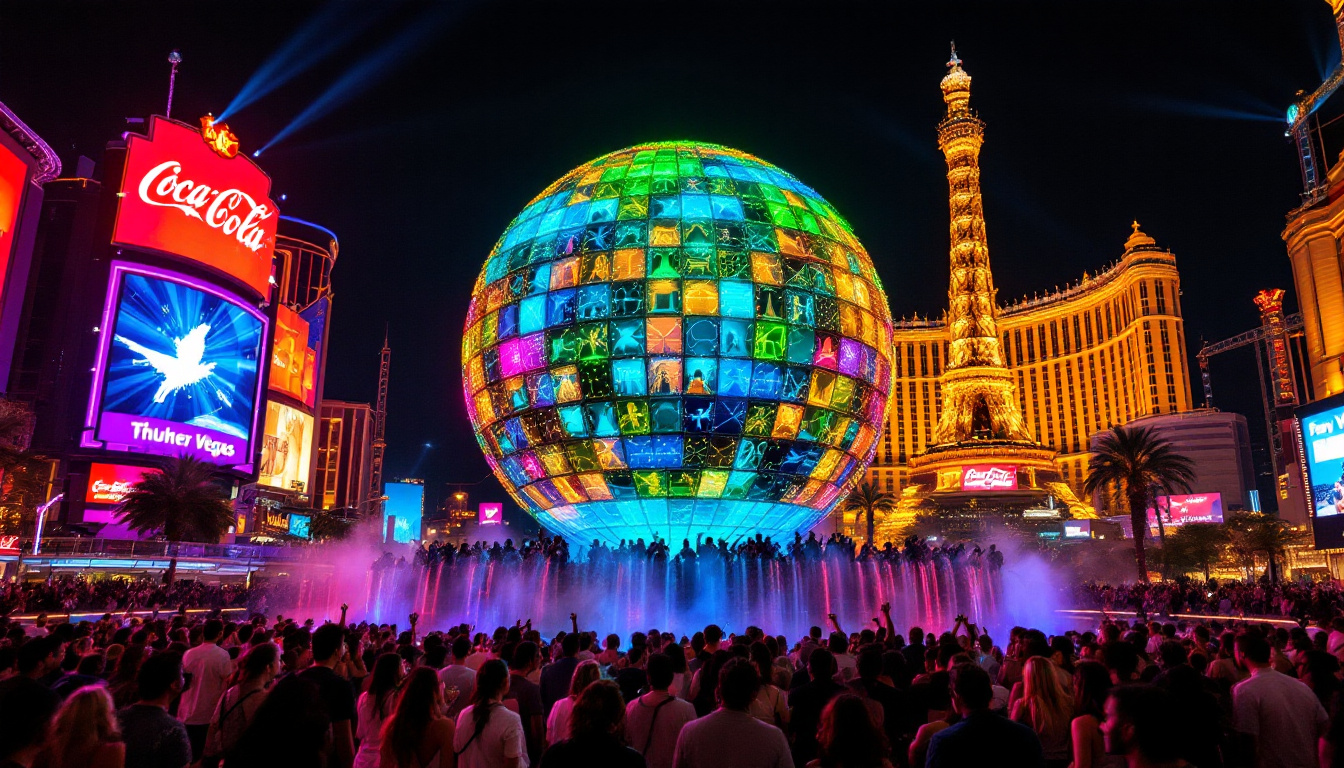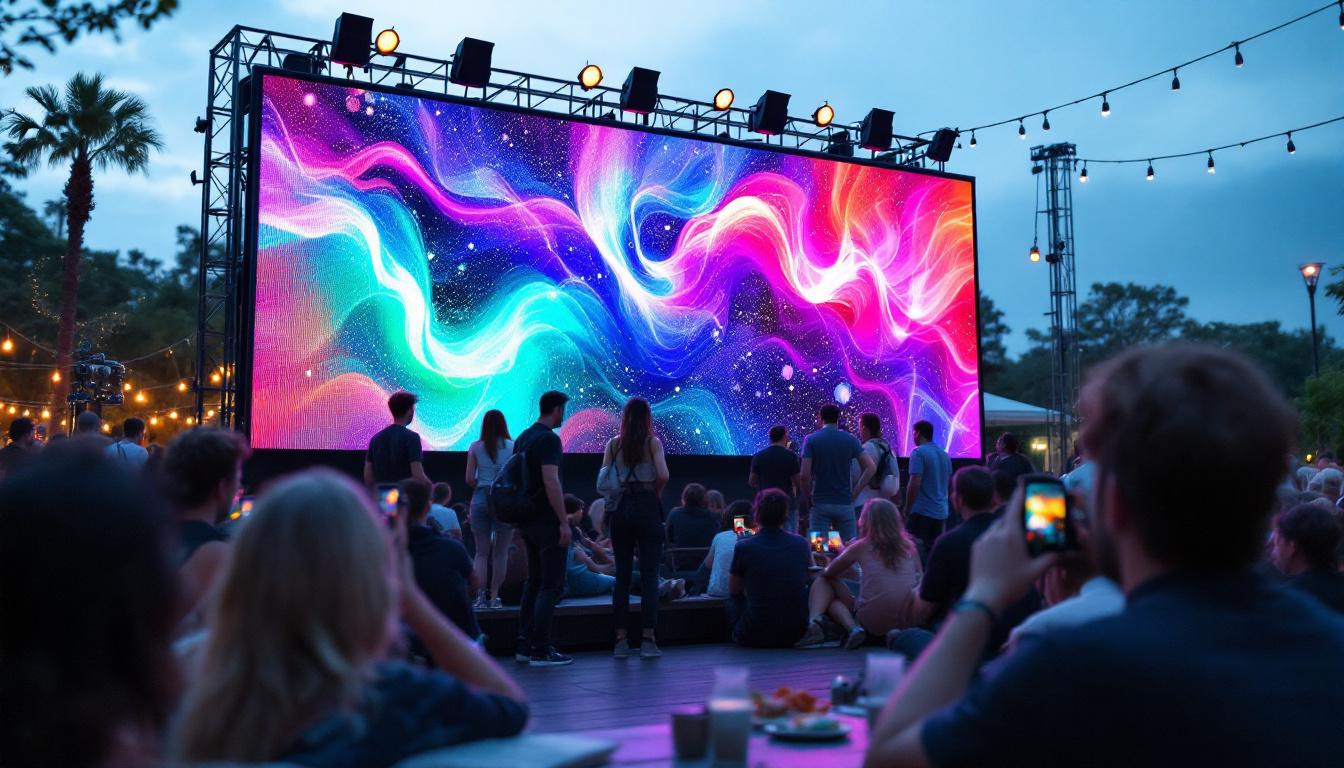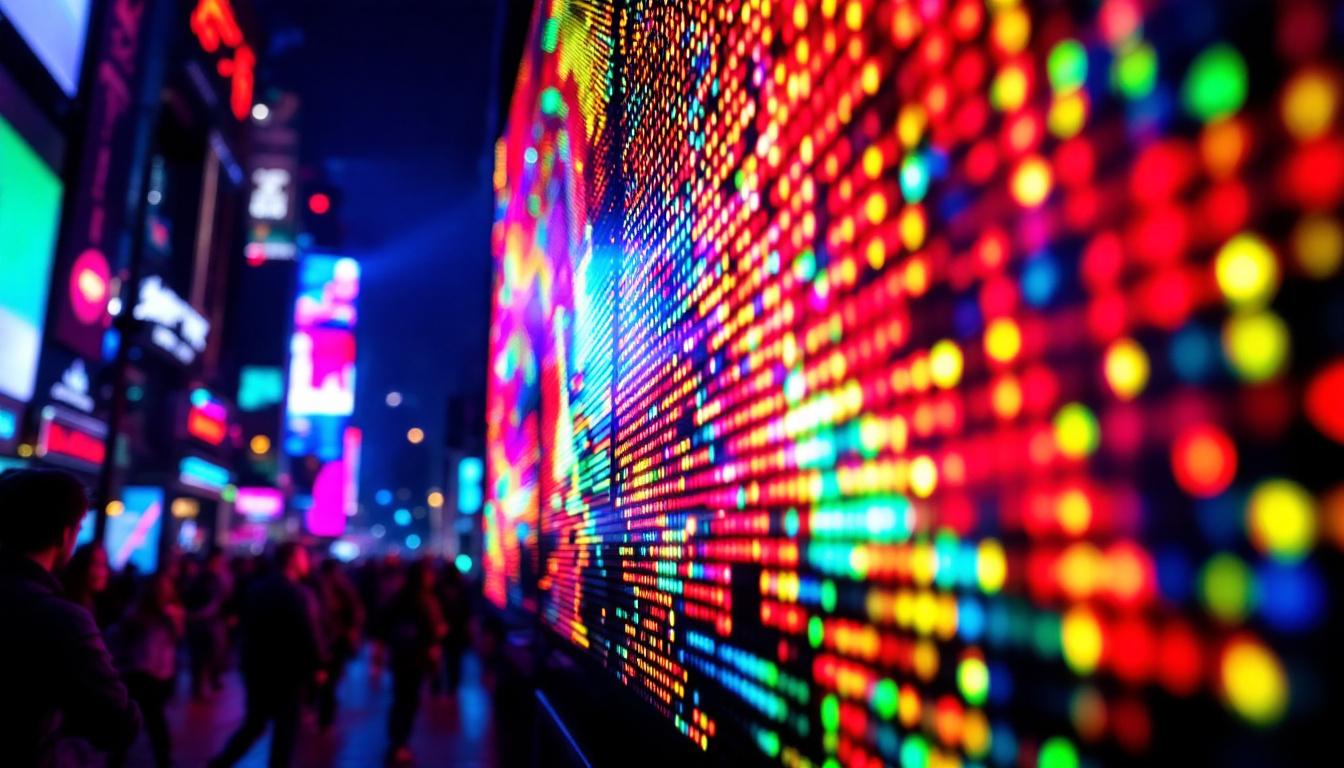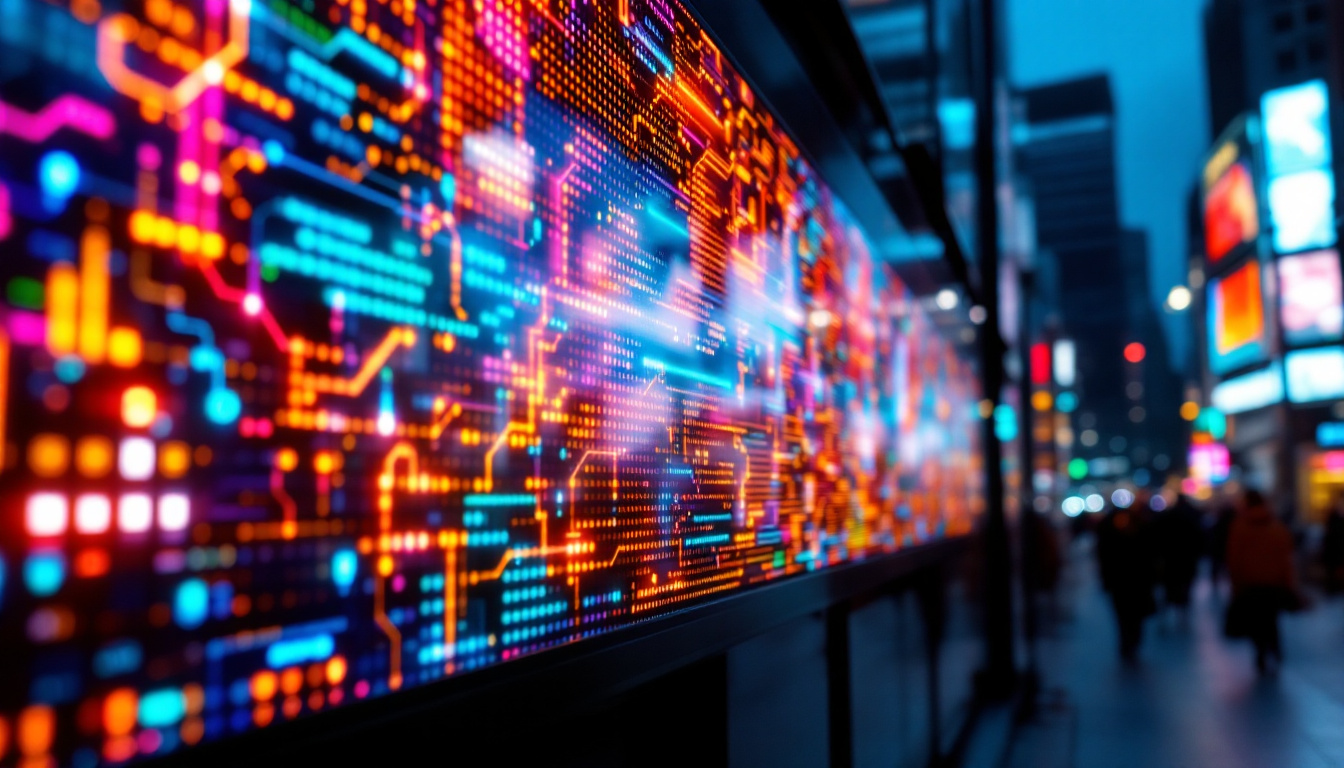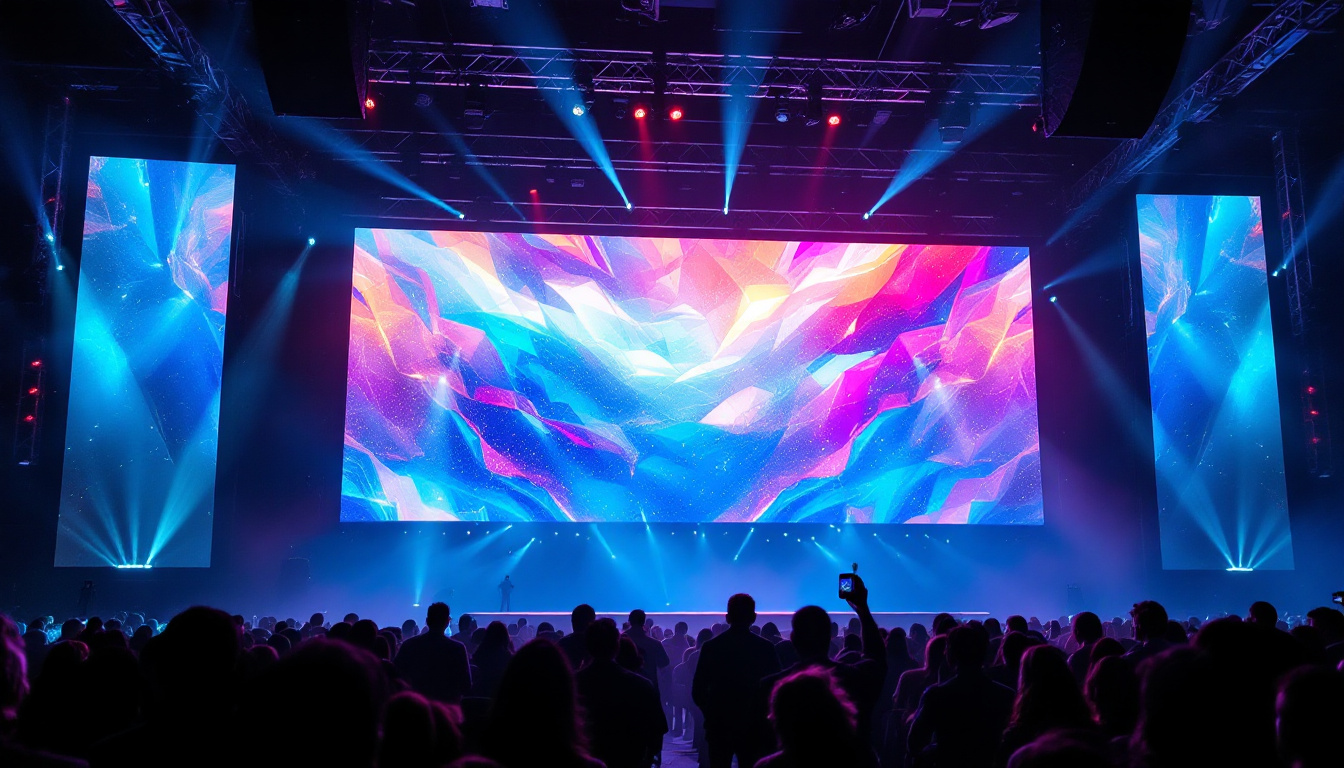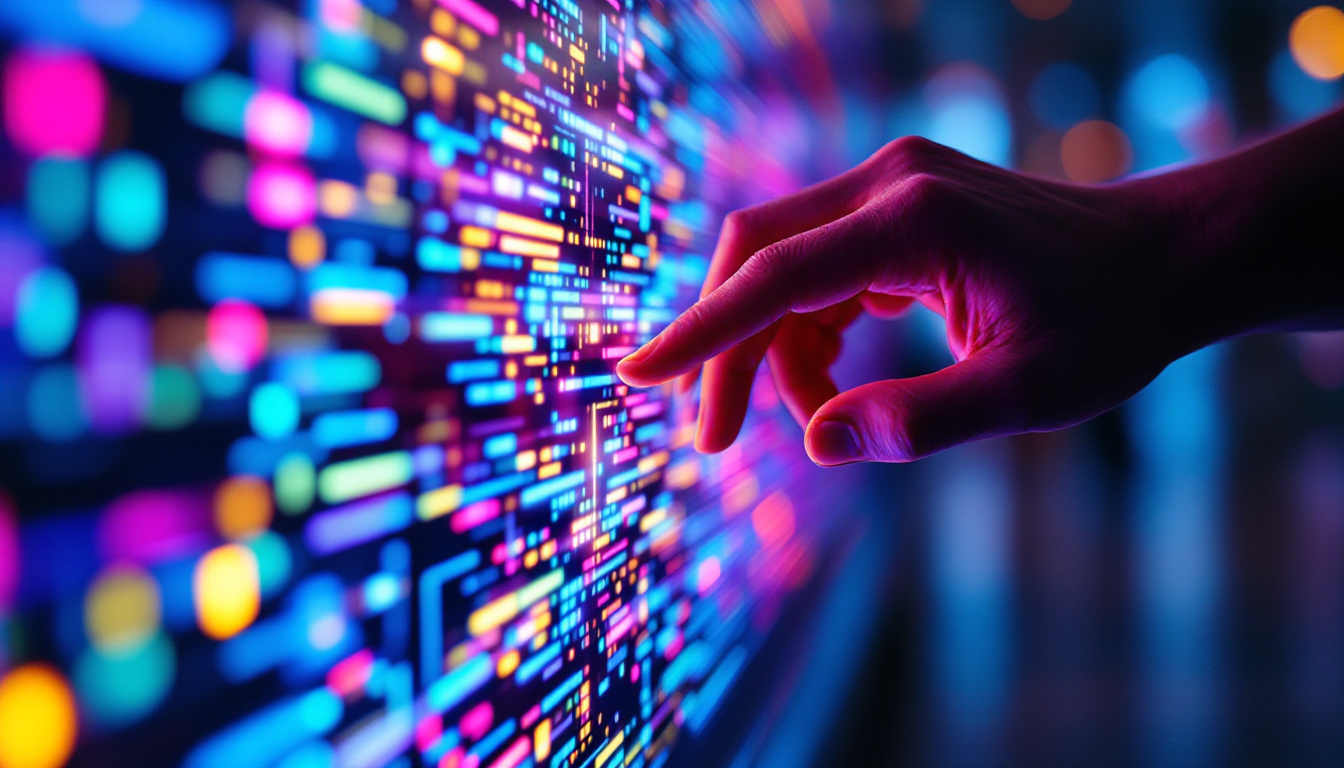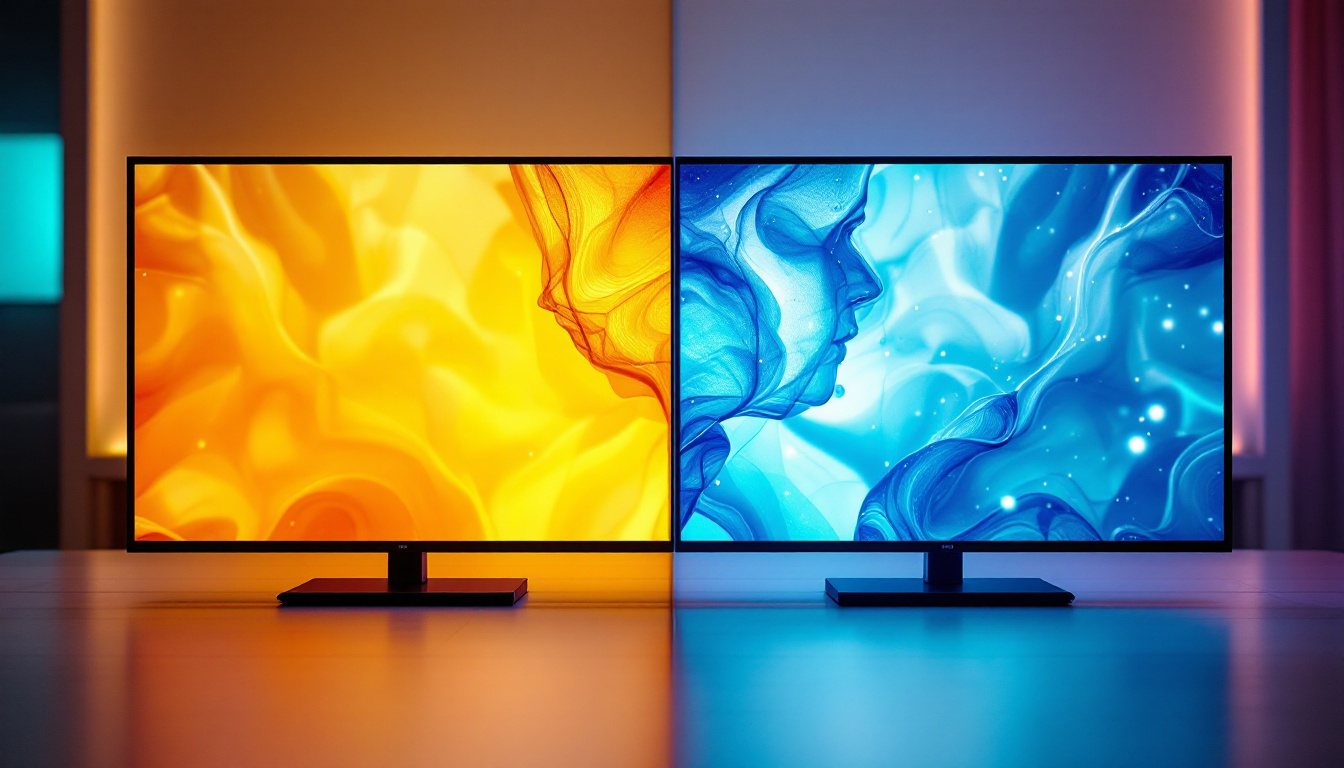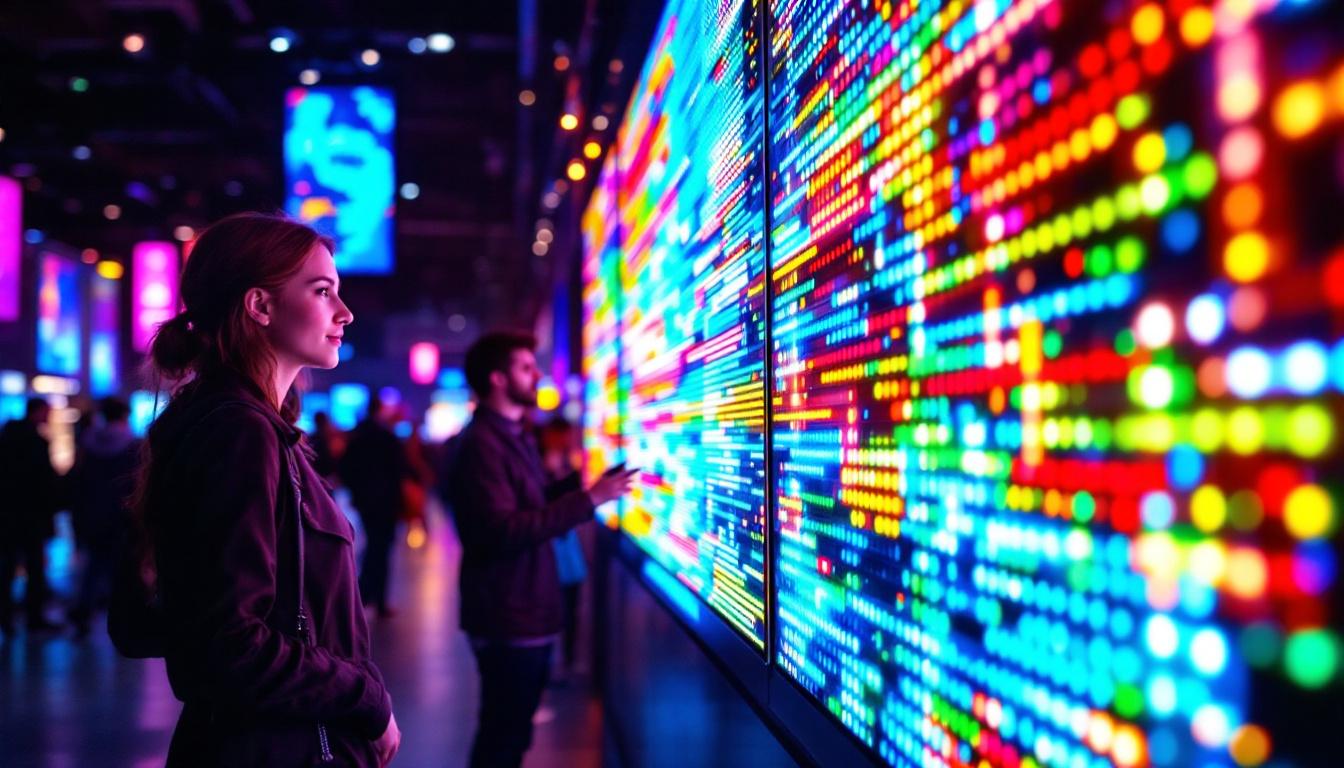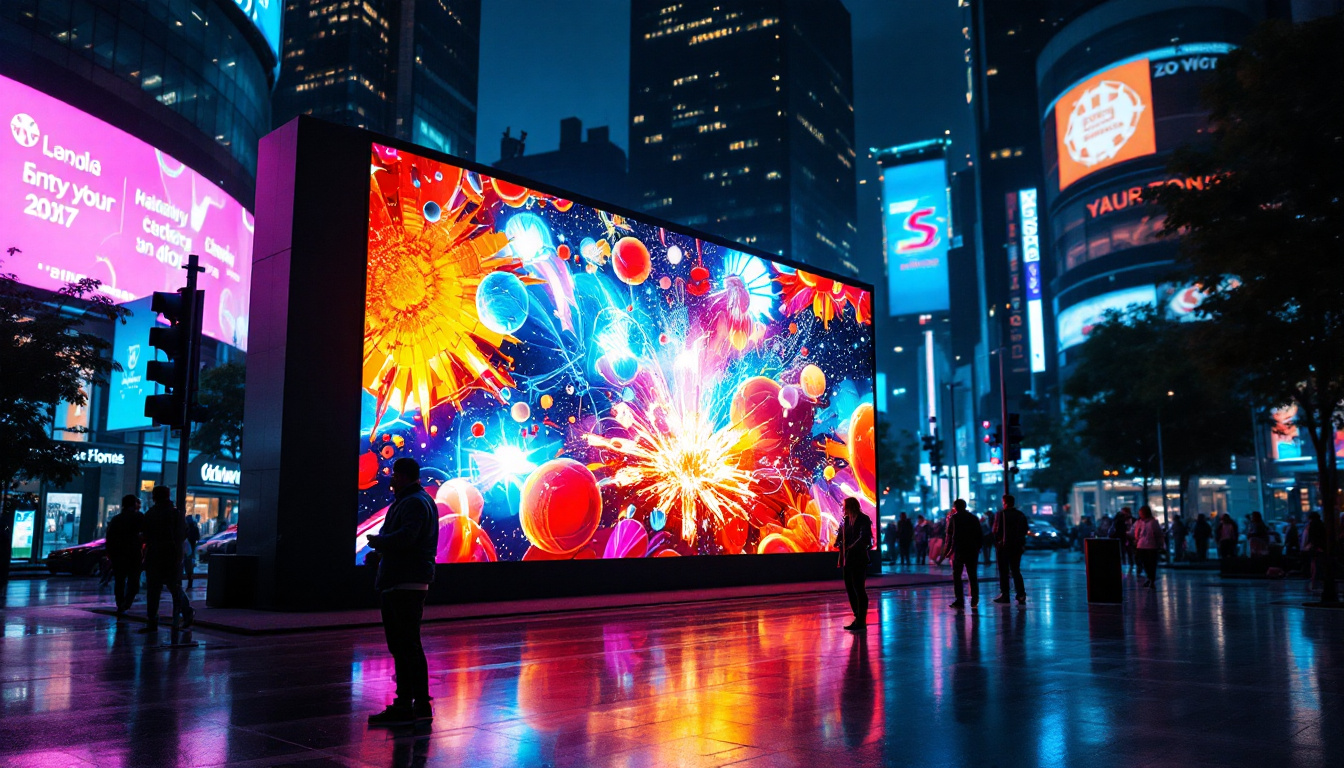In the ever-evolving world of advertising, LED displays have emerged as a powerful tool for marketers. These vibrant, eye-catching billboards not only capture attention but also convey messages in a dynamic way that traditional billboards cannot. This article delves into the intricacies of LED displays, exploring their technology, benefits, and applications in modern advertising.
Understanding LED Technology
LED, or Light Emitting Diode, technology has transformed the landscape of visual displays. Unlike traditional incandescent bulbs, LEDs are semiconductor devices that emit light when an electric current passes through them. This fundamental difference allows for a range of advantages that make LED displays ideal for advertising. The energy efficiency of LEDs is particularly noteworthy; they consume significantly less power than their incandescent counterparts, leading to lower energy bills and a reduced carbon footprint. This efficiency is not only beneficial for businesses but also contributes to a more sustainable environment.
How LED Displays Work
LED displays consist of numerous small diodes grouped together to form pixels. Each pixel can emit different colors, allowing for the creation of full-color images and videos. The combination of red, green, and blue (RGB) diodes in each pixel enables the display to produce a wide spectrum of colors. This technology is not only efficient but also allows for high brightness levels, making the displays visible even in direct sunlight. Additionally, the rapid response time of LEDs ensures that images can change quickly, making them ideal for displaying fast-moving content such as sports highlights or live news updates.
The control system behind LED displays plays a crucial role in their functionality. A computer or controller sends signals to the LED modules, determining which pixels light up and in what colors. This allows for the display of dynamic content, such as animations and videos, which can be updated remotely and in real-time. The integration of advanced software solutions further enhances this capability, allowing for sophisticated scheduling and targeted advertising. For instance, businesses can tailor their messages based on the time of day or specific audience demographics, maximizing engagement and effectiveness.
Types of LED Displays
LED displays come in various types, each suited for different applications. The most common types include:
- Indoor LED Displays: These are typically used in arenas, shopping malls, and conference centers. They are designed for close viewing and have a higher pixel density, resulting in sharper images. Their versatility allows them to be used for everything from live event broadcasting to interactive kiosks that engage customers directly.
- Outdoor LED Displays: Built to withstand the elements, these displays are used for billboards, stadiums, and public spaces. They have a lower pixel density but are much brighter to ensure visibility in daylight. Many outdoor displays are also equipped with advanced weatherproofing technologies, ensuring that they can operate effectively in rain, snow, and extreme temperatures.
- Transparent LED Displays: These innovative displays allow for visibility through the screen while still showcasing advertisements. They are often used in storefronts and large windows. Their unique design not only enhances the aesthetic appeal of a retail space but also provides an unobstructed view of the products inside, creating a compelling shopping experience.
The Benefits of LED Billboards
LED billboards offer numerous advantages over traditional advertising methods. Their unique features make them an attractive choice for businesses looking to enhance their visibility and engagement with potential customers.
High Visibility and Impact
One of the most significant benefits of LED billboards is their high visibility. The brightness of LED displays ensures that advertisements are seen from a distance, even in bright daylight. This visibility is particularly advantageous for outdoor advertising, where competition for attention is fierce.
Moreover, the dynamic nature of LED displays allows for the presentation of moving images and videos, which are proven to capture attention more effectively than static images. This capability can lead to increased engagement and higher recall rates among viewers. Studies have shown that dynamic advertisements can increase viewer retention by up to 80%, making them a powerful tool for brands looking to make a lasting impression.
Additionally, the ability to incorporate real-time content, such as live social media feeds or current news updates, can further enhance viewer interest. This interactivity not only keeps the content fresh but also encourages passersby to engage with the advertisement, fostering a deeper connection with the brand.
Cost-Effectiveness and Flexibility
While the initial investment in LED technology can be higher than traditional billboards, the long-term cost-effectiveness is notable. LED displays consume less energy, reducing operational costs significantly. Additionally, they have a longer lifespan, often lasting up to 100,000 hours, which minimizes replacement expenses.
Flexibility is another key advantage. Advertisers can easily change content remotely, allowing for real-time updates and the ability to tailor messages to specific audiences or events. This adaptability can lead to more targeted marketing strategies, enhancing the overall effectiveness of advertising campaigns. For instance, a restaurant can promote its daily specials in the morning and switch to happy hour promotions in the evening, ensuring that the message is always relevant to the time of day.
Furthermore, LED billboards can be programmed to display different advertisements at different times, optimizing the potential reach to various demographics throughout the day. This means that a single billboard can serve multiple clients or campaigns, maximizing the return on investment for advertisers. The ability to analyze viewer data and adjust content accordingly also empowers businesses to refine their strategies continuously, ensuring that they remain competitive in a fast-paced market.
Applications of LED Displays in Advertising
LED displays have found applications across various sectors, revolutionizing the way businesses communicate with their audiences. From retail to transportation, the versatility of LED technology makes it a preferred choice for many advertisers.
Retail Advertising
In the retail sector, LED displays are used to promote products, sales, and events. Their vibrant colors and dynamic content can attract customers’ attention, drawing them into stores. Many retailers utilize LED screens in their storefronts to showcase promotional videos or highlight new arrivals, creating an engaging shopping experience.
Furthermore, the ability to change content quickly allows retailers to adapt their messaging based on time of day, season, or specific promotions, ensuring that their advertising remains relevant and effective.
Transportation and Public Spaces
LED displays have also become a staple in transportation hubs such as airports and train stations. They provide real-time information about arrivals, departures, and delays, enhancing the passenger experience. Additionally, these displays can be used for advertising, capturing the attention of travelers who are often waiting or in transit.
In public spaces, LED billboards can convey important messages, such as public service announcements or event promotions. Their high visibility ensures that these messages reach a broad audience, making them an effective tool for community engagement.
Challenges and Considerations
Despite their numerous benefits, LED displays also come with challenges that advertisers must consider. Understanding these challenges can help businesses make informed decisions about their advertising strategies.
Initial Investment and Maintenance
The initial cost of purchasing and installing LED displays can be a barrier for some businesses. While the long-term savings in energy and maintenance costs are significant, the upfront investment may require careful budgeting and financial planning.
Additionally, while LED displays are generally low-maintenance, they do require periodic upkeep to ensure optimal performance. This includes cleaning the screens and addressing any technical issues that may arise, which can incur additional costs.
Regulatory Compliance
Advertisers must also navigate local regulations regarding outdoor advertising. Many cities have specific guidelines concerning the brightness, size, and content of LED displays to minimize distractions for drivers and pedestrians. Ensuring compliance with these regulations is essential to avoid fines and potential removal of displays.
The Future of LED Displays in Advertising
The future of LED displays in advertising looks promising, with ongoing advancements in technology and design. As the demand for more engaging and interactive advertising grows, LED displays are likely to evolve to meet these needs.
Integration with Smart Technology
One of the most exciting developments in LED display technology is the integration with smart technology. This includes the use of sensors and data analytics to tailor content based on audience demographics and behaviors. For instance, displays could change based on the time of day, weather conditions, or even the age and gender of viewers, creating a highly personalized advertising experience.
Moreover, the rise of augmented reality (AR) and virtual reality (VR) could further enhance the capabilities of LED displays. Imagine walking past a storefront and seeing an interactive advertisement that allows you to virtually try on clothes or visualize products in your home. This level of engagement could redefine how brands connect with consumers.
Sustainability and Eco-Friendly Solutions
As environmental concerns continue to grow, the advertising industry is also moving towards more sustainable practices. LED technology is inherently more energy-efficient than traditional lighting, but there is potential for even greater sustainability. Future developments may focus on using recyclable materials in manufacturing and improving energy efficiency further.
Additionally, the integration of solar panels with LED displays could create self-sustaining advertising solutions, reducing the carbon footprint of outdoor advertising. This shift towards eco-friendly practices not only benefits the environment but also appeals to increasingly conscious consumers.
Conclusion
LED displays have revolutionized the advertising landscape, offering a dynamic and engaging way for brands to connect with their audiences. With their high visibility, cost-effectiveness, and versatility, they have become an essential tool for marketers across various sectors. While challenges exist, the ongoing advancements in technology and a focus on sustainability promise a bright future for LED displays in advertising.
As businesses continue to explore innovative ways to capture attention and engage consumers, LED displays will undoubtedly play a pivotal role in shaping the future of advertising. Embracing this technology not only enhances brand visibility but also aligns with modern consumer expectations for interactive and personalized experiences.
Illuminate Your Brand with LumenMatrix
Ready to elevate your advertising strategy with high-impact visuals? LumenMatrix is at the forefront of LED display innovation, offering a diverse range of solutions tailored to your unique needs. From Indoor and Outdoor LED Wall Displays to specialized options like Vehicle, Sports, and Floor LED Displays, our technology is designed to captivate and engage your audience. Embrace the future of advertising with our Custom, All-in-One, and LED Transparent Displays, and see how our commitment to revolutionizing visual communication can transform your brand’s presence. Check out LumenMatrix LED Display Solutions today and start creating unforgettable visual experiences.


